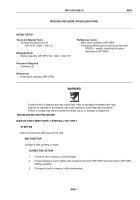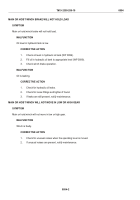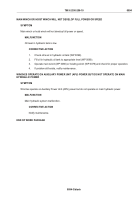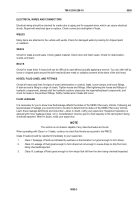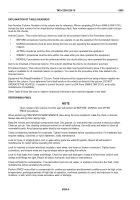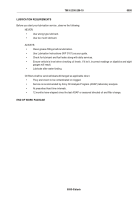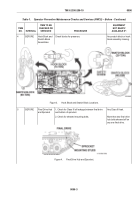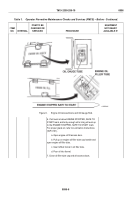TM-9-2350-256-10 - Page 511 of 796
ELECTRICAL WIRES AND CONNECTORS
Electrical wiring should be checked for cracks due to aging and for exposed wires, which can cause electrical
shorts. Repair with electrical tape or replace. Check connectors and tighten if loose.
WELDS
Many items are attached to the vehicle with welds. Check for damaged welds by looking for chipped paint
or oxidation.
SEALS
Check for leaks around seals. Check gasket material. Check door and hatch seals. Check for deterioration,
cracks, and tears.
BOLTS
Check for loose bolts. A loose bolt can be difficult to spot without actually applying a wrench. You can often tell by
loose or chipped paint around the bolt head and bare metal or oxidation present at the base of the bolt head.
HOSES, FLUID LINES, AND FITTINGS
Check all hoses and lines for signs of wear (deterioration or cracks), leaks, loose clamps, and loose fittings.
A stain around a fitting is a sign of a leak. Tighten hoses and fittings. After tightening the hoses and fittings of
hydraulic components, always start the hydraulic system, pressurize the repaired/replaced components, and
check for leaks in the pertinent fittings. Notify maintenance if leaks still occur.
FLUID LEAKAGE
It is necessary for you to know how fluid leakage affects the status of the M88A1 Recovery Vehicle. Following are
types/classes of leakage you need to know to be able to determine the status of the M88A1 Recovery Vehicle.
Learn these leakage definitions and remember—when in doubt, notify your supervisor. Equipment operation is
allowed with minor leakage (Class I or II). Consideration must be given to fluid capacity in the item/system being
checked/inspected. When in doubt, notify your supervisor.
NOTE
The vehicle is not mission capable if any class fuel leaks are found.
When operating with Class I or II leaks, continue to check fluid levels as required in the PMCS.
Class III leaks should be reported immediately to your supervisor.
1.
Class I: Seepage of fluids as indicated by wetness or discoloration not great enough to form drops.
2.
Class II: Leakage of fluid great enough to form drops but not enough to cause drops to drip from item
being checked/inspected.
3.
Class III: Leakage of fluids great enough to form drops that fall from the item being checked/inspected.
TM 9-2350-256-10
0095
0095-3
Back to Top



